39 start with R start with R
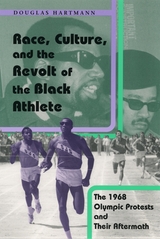
Drawing on extensive archival research and newly gathered oral histories, Douglas Hartmann sets out to answer these questions, reconsidering this pivotal event in the history of American sport. He places Smith and Carlos within the broader context of the civil rights movement and the controversial revolt of the black athlete. Although the movement drew widespread criticism, it also led to fundamental reforms in the organizational structure of American amateur athletics. Moving from historical narrative to cultural analysis, Hartmann explores what we can learn about the complex relations between race and sport in contemporary America from this episode and its aftermath.
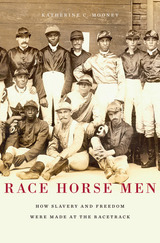
Race Horse Men recaptures the vivid sights, sensations, and illusions of nineteenth-century thoroughbred racing, America’s first mass spectator sport. Inviting readers into the pageantry of the racetrack, Katherine C. Mooney conveys the sport’s inherent drama while also revealing the significant intersections between horse racing and another quintessential institution of the antebellum South: slavery.
A popular pastime across American society, horse racing was most closely identified with an elite class of southern owners who bred horses and bet large sums of money on these spirited animals. The central characters in this story are not privileged whites, however, but the black jockeys, grooms, and horse trainers who sometimes called themselves race horse men and who made the racetrack run. Mooney describes a world of patriarchal privilege and social prestige where blacks as well as whites could achieve status and recognition and where favored slaves endured an unusual form of bondage. For wealthy white men, the racetrack illustrated their cherished visions of a harmonious, modern society based on human slavery.
After emancipation, a number of black horsemen went on to become sports celebrities, their success a potential threat to white supremacy and a source of pride for African Americans. The rise of Jim Crow in the early twentieth century drove many horsemen from their jobs, with devastating consequences for them and their families. Mooney illuminates the role these too often forgotten men played in Americans’ continuing struggle to define the meaning of freedom.
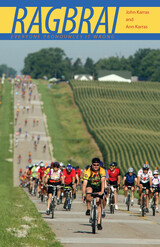
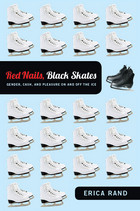
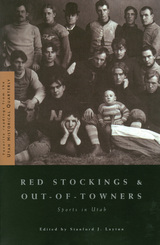
In team sports, the nearly forgotten Salt Lake Seagulls of 1946-47 competed against the best pro football teams in the West, while two baseball teams, the Salt Lake Deserets and their inner-city rival, the Red Stockings, played successfully in 1878-79 against the Cheyenne Reds, the Chicago White Stockings, the Denver Browns, the Nebraska Omahas, and the Rochester Hop Bitters.
Added to these, such pastimes as horse racing at the state fairgrounds, a winter ascent of Mt. Timpanogos in 1916, and angling at Fish Lake National Forest show the diversity and evolution of athletics in Utah. Like replaying the 1998 title game between the Utah Jazz and the Chicago Bulls, these assembled tales of perseverance, skill, exuberance, and heartbreak from long ago are equally thrilling.
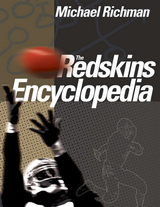
"Hail to the Redskins" and Redskin-mania have consumed the nation's capital since 1937, the Redskins' fist year in Washington. And the fervor remains as strong, if not stronger, today.
Amply illustrated with 200 photos of players, coaches, and fans, The Redskins Encyclopedia recounts the franchise's first 75 seasons, reliving the great -- and not so great -- moments in the team's storied history, and the men who helped make Sundays memorable.
Fans will read about:
--Coaches like George Allen, the eccentric, passionate man who left a legacy as an NFL pioneer, and Joe Gibbs, who formed a D-Y-N-A-S-T-Y
--Players like star running back and all-time Redskins ground-gainer John Riggins, who once told Supreme Court Justice Sandra Day O'Connor to "loosen up, Sandy baby," and Doug Williams, the first black quarterback to win a Super Bowl and Super Bowl MVP honors
--The franchise's golden run of four Super Bowl appearances -- and three wins -- in the 1980s and early 1990s
--The legendary Redskins-Cowboys rivalry
--A year-by-year history of the team from 1932 to the present, with stats from each season
--Individual profiles of more than 100 Redskins players -- from Sammy Baugh to Darrell Green to Art Monk to Sonny Jurgensen to Charley Taylor to Joe Theismann
With an unparalleled collection of anecdotes, quotes, trivia, and hard-to-find information, The Redskins Encyclopedia is a must-have book for any fan who has ever bled burgundy and gold.
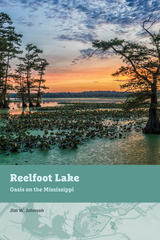
Each year nearly a quarter million visitors come to Reelfoot Lake, also known as “The Earthquake Lake,” to enjoy its natural splendor. With its twenty-five thousand acres of shimmering water, haunting cypress swamps, and two-hundred-year-old lily marshes, the lake is rich in natural beauty and natural history. Yet, despite being one of the most unique lakes in the country—this natural body of water formed during the New Madrid earthquakes in the early nineteenth century—it is relatively understudied. Biologist and environmentalist Jim W. Johnson grew up on the lake and experienced its natural and cultural history firsthand. As a wildlife biologist, he spent much of his career managing Reelfoot and its surrounding area. Reelfoot Lake: Oasis on the Mississippi is part personal remembrance, part guidebook, and part cautionary tale on river and wetland ecology, conservation, and land management, written by an author intimately knowledgeable about the lake and life on it. By exploring Reelfoot’s ancient and recent history, Johnson illuminates the lives of generations of people who lived and thrived in the floodplain. For those looking to navigate the waters of the lake, this book will make travel through the bayous and canals much easier and more pleasurable. And its discussions about the lake’s ecology will bolster voices calling for the protection and preservation of Reelfoot and other wetlands like it.
Accompanied by stunning photography, Johnson’s book is sure to become a useful outdoor guide to Reelfoot Lake and will increase readers’ appreciation for wetlands.

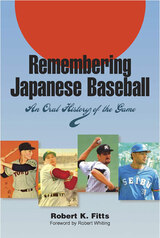
Remembering Japanese Baseball: An Oral History of the Game transports us onto diamonds and into dugouts on the other side of the globe, where the vigorous sportsmanship of the game and the impassioned devotion of its fans transcend cultural and geographic borders and prove that baseball is fast becoming an international pastime.
Called Yakyu, baseball has been played in Japan since the 1890s but has only recently gained a substantial global following. Robert K. Fitts chronicles the nation’s distinctive version of the sport as recounted by twenty-five of its players. Fitts’s careful choice of subjects represents the experiences of a mix of American and Japanese players—including stars, titleholders, and members of the Japanese Hall of Fame. Informal, candid, and remarkably specific, these recollections describe teammates and opponents, corporate owners and loyal fans, triumphs and frustrations, collectively capturing all the spirit and emotion engendered by the game from decidedly personal vantage points. Throughout, readers glimpse the unique traits of baseball in Japan and discern how the game has evolved since its inception as well as how it differs from its American counterpart.
An unparalleled introduction for an American audience, Remembering Japanese Baseball is augmented by photos of its twenty-five interviewees and a timeline demarking milestone moments in the game’s Japanese history. Robert Whiting, author of You Gotta Have Wa! and The Meaning of Ichiro, provides the foreword.
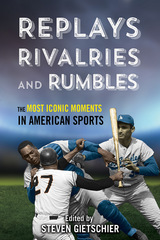
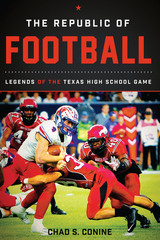
Anywhere football is played, Texas is the force to reckon with. Its powerhouse programs produce the best football players in America. In The Republic of Football, Chad S. Conine vividly captures Texas’s impact on the game with action-filled stories about legendary high school players, coaches, and teams from around the state and across seven decades.
Drawing on dozens of interviews, Conine offers rare glimpses of the early days of some of football’s biggest stars. He reveals that some players took time to achieve greatness—LaDainian Tomlinson wasn’t even the featured running back on his high school team until a breakthrough game in his senior season vaulted him to the highest level of the sport—while others, like Colt McCoy, showed their first flashes of brilliance in middle school. In telling these and many other stories of players and coaches, including Hayden Fry, Spike Dykes, Bob McQueen, Lovie Smith, Art Briles, Lawrence Elkins, Warren McVea, Ray Rhodes, Dat Nguyen, Zach Thomas, Drew Brees, and Adrian Peterson, Conine spotlights the decisive moments when players caught fire and teams such as Celina, Southlake Carroll, and Converse Judson turned into Texas dynasties. Packed with never-before-told anecdotes, as well as fresh takes on the games everyone remembers, The Republic of Football is a must-read for all fans of Friday night lights.

According to Rosenweig, the new urban landscape around these retro stadiums often presents a more homogenous culture than the one the new park replaced. Indeed, whole sections of cities have razed in order to build stadiums that cater to clientele eager to enjoy a nostalgic urban experience. This mandate to draw suburban residents and tourists to the heart of downtown, combined with the accompanying gentrification of these newly redeveloped areas, has fundamentally altered historic urban centers.
Focusing on Cleveland’s Jacobs Field as a case study, Rosenweig explores the political economy surrounding the construction of downtown ball parks, which have emerged as key components of urban entertainment-based development. Blending economic and cultural analysis, he considers the intersection of race and class in these new venues. For example, he shows that African American consumers in the commercial district around Jacobs Field have largely been replaced by symbolic representations of African American culture, such as piped-in rap music and Jackie Robinson replica jerseys. He concludes that the question of authenticity, the question of what it means to simultaneously commemorate and commodify the past in retro ball parks, mirrors larger cultural issues regarding the nature and implications of urban redevelopment and gentrification.
Daniel Rosensweig is a professor in the Bachelor of Interdisciplinary Studies Program at the University of Virginia
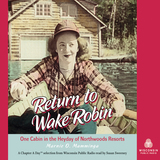
Five generations of Marnie O. Mamminga’s family have been rejuvenated by times together in Wisconsin’s Northwoods. In a series of evocative remembrances accompanied by a treasure trove of vintage family photos, Mamminga takes us to Wake Robin, the cabin her grandparents built in 1929 on Big Spider Lake near Hayward, on land adjacent to Moody’s Camp. Along the way she preserves the spirit and cultural heritage of a vanishing era, conveying the heart of a place and the community that gathered there.
Bookended by the close of the logging era and the 1970s shift to modern lake homes, condos, and Jet Skis, the 1920s to 1960s period covered in these essays represents the golden age of Northwoods camps and cabins—a time when retreats such as Wake Robin were the essence of simplicity. In Return to Wake Robin, Mamminga describes the familiar cadre of fishing guides casting their charm, the camaraderie and friendships among resort workers and vacationers, the call of the weekly square dance, the splash announcing a perfectly executed cannonball, the lodge as gathering place. By tracing the history of one resort and cabin, she recalls a time and experience that will resonate with anyone who spent their summers Up North—or wishes they had.
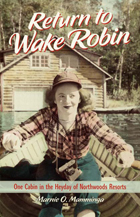
Five generations of Marnie O. Mamminga’s family have been rejuvenated by times together in Wisconsin’s Northwoods. In a series of evocative remembrances accompanied by a treasure trove of vintage family photos, Mamminga takes us to Wake Robin, the cabin her grandparents built in 1929 on Big Spider Lake near Hayward, on land adjacent to Moody’s Camp. Along the way she preserves the spirit and cultural heritage of a vanishing era, conveying the heart of a place and the community that gathered there.
Bookended by the close of the logging era and the 1970s shift to modern lake homes, condos, and Jet Skis, the 1920s to 1960s period covered in these essays represents the golden age of Northwoods camps and cabins—a time when retreats such as Wake Robin were the essence of simplicity. In Return to Wake Robin, Mamminga describes the familiar cadre of fishing guides casting their charm, the camaraderie and friendships among resort workers and vacationers, the call of the weekly square dance, the splash announcing a perfectly executed cannonball, the lodge as gathering place. By tracing the history of one resort and cabin, she recalls a time and experience that will resonate with anyone who spent their summers Up North—or wishes they had.
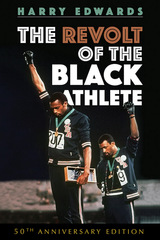
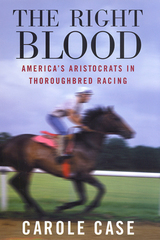
The spectacle of thoroughbred horses dashing powerfully and gracefully down the track is one of the most stimulating and beautiful of all athletic events. Yet despite its mass appeal, an elite group of men and a few women have traditionally controlled the sport. What are the origins and personalities behind the sport in America?
In The Right Blood, Carole Case examines the history of American thoroughbred racing, in particular the story behind the Jockey Club. Formed in 1894 by the nation’s richest, most powerful, and often most notorious men, the Jockey Club continues to this day to exert a formidable influence on this “sport of kings.”
Using Jockey Club documents and personal interviews, Case traces the history of how club members created and enforced the rules governing racing, from the first decades of the twentieth century to the present day. She tells of how club members once assigned racing dates, issued licenses, appointed judges, and dictated who could train, ride, and own thoroughbred horses. Case also describes how many of them exploited the poor to work their horses, defeated those who posed a threat to their interests, and excluded people of different backgrounds from horse racing ¾ all in the name of improving the breed and promoting the sport. The Jockey Club maintained this stranglehold on the sport until 1950, when an appellate court took away its licensing power. Perhaps most interestingly, the men of the Jockey Club became and continue as keepers of the registry of North American thoroughbred horses, The American Stud Book, determining which horses can ¾ and cannot ¾ be considered thoroughbreds.
Written for the general reader interested in the sport and its culture, The Right Blood is an engaging look behind the scenes of American horse racing.
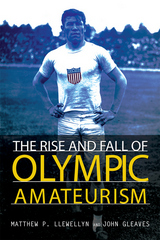
Matthew P. Llewellyn and John Gleaves analyze how this astonishing transformation took place. Drawing on Olympic archives and a wealth of research across media, the authors examine how an elite--white, wealthy, often Anglo-Saxon--controlled and shaped an enormously powerful myth of amateurism. The myth assumed an air of naturalness that made it seem unassailable and, not incidentally, served those in power. Llewellyn and Gleaves trace professionalism's inroads into the Olympics from tragic figures like Jim Thorpe through the shamateur era of under-the-table cash and state-supported athletes. As they show, the increasing acceptability of professionals went hand-in-hand with the Games becoming a for-profit international spectacle. Yet the myth of amateurism's purity remained a potent force, influencing how people around the globe imagined and understood sport.
Timely and vivid with details, The Rise and Fall of Olympic Amateurism is the first book-length examination of the movement's foundational ideal.
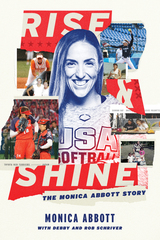
When she was in fifth grade, Monica Abbott declared that she would one day become an Olympic athlete. In the decades that would follow, her prediction would prove stunningly true, as she would not only compete in the Games but go on to claim two Silver Medals as pitcher for Team USA softball.
In her twenty-plus years as a professional athlete, Abbott has set a high standard of firsts and achievements—but her talents and tenacity have not only shattered records but have also created new possibilities for female athletes everywhere. In Rise and Shine, Abbott chronicles significant lessons and experiences from her childhood, her University of Tennessee and professional softball years, her time in the Olympics, and beyond. Throughout the book, she shares insights cultivated on her journey, offering them to readers of all ages and skill sets to consider as they endeavor to bring their lives into contact with their dreams.
How do we set goals yet unseen? How do we thrive even while overcoming obstacles? And perhaps most importantly, how do we turn our successes into advantages for others? With a foreword by world-renowned tennis icon Billie Jean King, Rise and Shine is more than a record of medals and firsts; it is the story of making dreams come true and of lifting others with you as you rise.
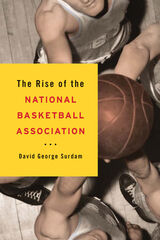
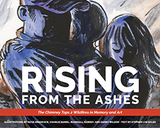
This catalog documents a 2022 exhibition of original editorial illustrations commissioned by the University of Tennessee Libraries to complement the Chimney Tops 2 Wildfires Oral History Project. The four illustrators showcased here have strong ties to East Tennessee. Paige Braddock, author of the Eisner-nominated comic strip Jane’s World and Chief Creative Officer at Charles M. Schulz Creative Associates, is an ’85 UT alumna; Charlie Daniel, beloved Knoxville News Sentinel editorial illustrator, has been a Knoxville resident since 1958; Marshall Ramsey, syndicated editorial illustrator and Pulitzer nominee, is a ’91 UT alumnus; and professional illustrator Danny Wilson has been a visible part of Knoxville’s graphic landscape since graduating from UT in 1984. The artists were given access to the project’s digital archive of oral interviews—to date, 139 have been recorded—and were asked to respond creatively to what they heard and read.
The result is Rising from the Ashes, a candid and deeply felt collection of illustrations encapsulating accounts of the merciless firestorm that enveloped Sevier County in November 2016. The flexible medium of the editorial illustration shows itself capable of extended narrative, disquieting detail, and poignant synthesis, as well as moments of beauty, hope, horror, and even humor as it ushers viewers into the recollections of wrestling and sorrow that animate the project’s still expanding archive. Bales writes, “Ultimately, the multiple fires destroyed or damaged 2,500 homes and buildings, killed 14 trapped people, injured another 200 or more, and burned over 17,000 acres of mostly woodlands that were a powder keg of dried leaves, all in a matter of three hours.” Years later, the ramifications of this event are still being felt in the community and region. Rising from the Ashes is a tribute to a people who suffered, lost, banded together, and rebuilt; and no less important, it is an expression of solidarity, recognizing how much remains to be done.
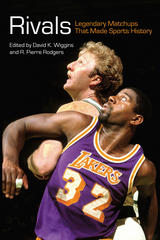
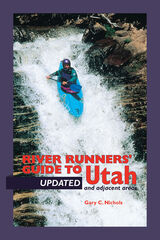
A fully revised and updated edition of Gary Nichols’ widely used guide to river running in Utah. Major changes have occurred on Big and Little Cottonwood Creeks, which have many new drops with dangerous hydraulics. This edition accounts for these and other alterations in the state’s waterways over the past fifteen years. Also, several of the original river access points are now on private land. Alternative access points are presented and users are alerted to the necessity of requesting permission. All this and much more will once again make A River Runners’ Guide to Utah and Adjacent Areas the one source for vital and reliable information on more than ninety river trips for beginner and expert alike. It includes:
-Over 90 river trips with descriptions and maps
-Location of access and take-out points
-Instructions for all skill levels
-Ratings of all waterways by levels of difficulty
-Identification of danger areas and obstacles
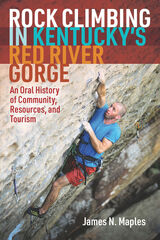
Rock Climbing in Kentucky’s Red River Gorge documents, for the first time, fifty years of oral history from this famous climbing community. Through extensive interviews, Maples reconstructs the growth of rock climbing in the region—including a twice-failed dam project, mysterious first routes, unauthorized sport-route growth on public lands, and a controversial archaeological dig. The book details five decades of collaborations to secure ongoing access to some of the world’s most beautiful and technically demanding routes and the challenges along the way.
More than a recounting of the past, however, Rock Climbing in Kentucky’s Red River Gorge uses the region’s extraordinary history to argue that climbing has the potential to be a valuable source of sustainable economic activity in rural areas throughout Appalachia today and in the years to come. The book concludes by offering policy recommendations and lessons learned about building beneficial partnerships among climbers, local communities, and public land managers to encourage community development and ecotourism alongside preservation.

When you hear the words "Boston sports," does your mind flash to a place or to a person? Do you think of a fly ball arching over the Green Monster, a Celtic breaking across the parquet at Boston Garden, rowers skimming along the Charles River in autumn, or runners tackling the grueling stretch of "Heartbreak Hill" during the Boston Marathon? Or do you conjure faces--a smiling Babe Ruth, a bearded Bill Russell, a determined Rocky Marciano, a boyish and nimble Bobby Orr, or a defiant Pedro Martinez? Most likely, it is impossible to separate the two, impossible to imagine Bob Cousy on any court other than the Garden or Ted Williams playing at any field other than Fenway. Certain people and places are as inseparable as heads and tails on a penny.
The Rock, the Curse, and the Hub is a collection of original essays about the people and places that live in the minds and memories of Bostonians and all Americans. From the Boston of the young Bambino and even younger Francis Ouimet to the glories and agonies of 1986 and the struggles to keep the Patriots in town, each chapter focuses on the games and the athletes, but also on which sports have defined Boston and Bostonians. In a city of deep ethnic and class divisions, sports have provided a common ground, an intense shared experience. Pursuing the legend and the lore, these essays celebrate the players, the games, and the arenas that are at the heart of the city of Boston.
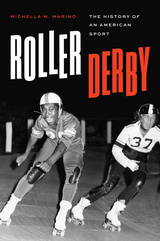
Since 1935, roller derby has thrilled fans and skaters with its constant action, hard hits, and edgy attitude. However, though its participants’ athleticism is undeniable, roller derby has never been accepted as a “real” sport. Michella M. Marino, herself a former skater, tackles the history of a sport that has long been a cultural mainstay for one reason both utterly simple and infinitely complex: roller derby has always been coed.
Richly illustrated and drawing on oral histories, archival materials, media coverage, and personal experiences, Roller Derby is the first comprehensive history of this cultural phenomenon, one enjoyed by millions yet spurned by mainstream gatekeepers. Amid the social constraints of the mid-twentieth century, roller derby’s emphasis on gender equality attracted male and female athletes alike, producing gender relations and gender politics unlike those of traditional sex-segregated sports. In an enlightening feminist critique, Marino considers how the promotion of pregnancy and motherhood by roller derby management has simultaneously challenged and conformed to social norms. Finally, Marino assesses the sport’s present and future after its resurgence in the 2000s.
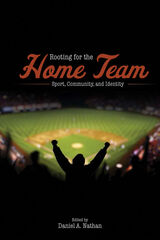
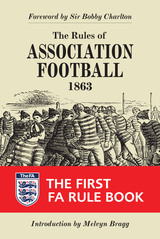
In 1863 a group of Victorian Oxbridge graduates, frustrated by the confusing riot of competing rules that characterized the game of British football, began meeting at the Freemason’s Tavern in Lincoln’s Inn Fields, London, to codify the rules of the game. They quickly drew up the standard set of rules, creating the First Rule Book of the Football Association, reprinted here in its entirety alongside illustrations and drawings of the game.
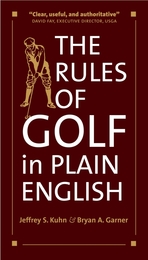
The hopes of renowned writer and golfer Henry Longhurst—and millions of golfers before and after him—have finally been realized. In The Rules of Golf in Plain English, Bryan A. Garner, American English language and usage expert, and Jeffrey S. Kuhn, volunteer USGA rules official, have translated the knotty Rules with the encouragement and permission of the United States Golf Association. The result is a modern, readable version that offers, for the first time, clear guidance to both amateurs and professionals.
Based on a 338-word set of thirteen rules written in 1744, the official Rules have grown, over two and a half centuries, to 40,000 words. Numerous contributors and a complex revision process have rendered these Rules so opaque and stylistically inconsistent that a companion volume—the 600-page Decisions on the Rules of Golf—has been published to help golfers navigate them.
Both lawyers and avid golfers, Kuhn and Garner recognized the difficulties that the language of the Rules of Golf created, especially in a sport that expects players to call penalties on themselves. By reworking the Rules line by line, word by word, they have produced an accessible resource that no golfer—from the duffer to the pro—should be without.
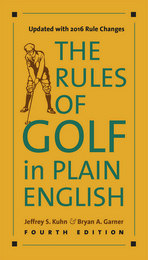
Two hundred years of revisions have rendered these Rules opaque and stylistically inconsistent. Those intricacies can be intimidating for anyone hoping to pick up the game and frustrating for longtime players who just want to settle a dispute. Both lawyers and avid golfers, Jeffrey S. Kuhn and Bryan A. Garner recognized the difficulties that the language of the Rules of Golf has created, especially in a sport that expects players to call penalties on themselves. By reworking the Rules line by line, word by word, they have produced an accessible resource that no golfer—from the duffer to the pro—should be without.
This new edition of The Rules of Golf in Plain English is fully aligned with the latest United States Golf Association updates and continues to be published with their permission and encouragement. Clear and concise, this reference will allow players to spend more time playing through and less time scratching their heads.
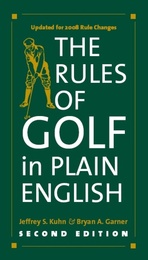
The hopes of renowned writer and golfer Henry Longhurst—and millions of golfers before and after him—have finally been realized. In The Rules of Golf in Plain English, Bryan A. Garner, American English language and usage expert, and Jeffrey S. Kuhn, volunteer USGA rules official, have translated the knotty Rules with the encouragement and permission of the United States Golf Association. The result is a modern, readable version that offers, for the first time, clear guidance to both amateurs and professionals.
Based on a 338-word set of thirteen rules written in 1744, the official Rules have grown, over two and a half centuries, to 40,000 words. Numerous contributors and a complex revision process have rendered these Rules so opaque and stylistically inconsistent that a companion volume—the 600-page Decisions on the Rules of Golf—has been published to help golfers navigate them.
Both lawyers and avid golfers, Kuhn and Garner recognized the difficulties that the language of the Rules of Golf created, especially in a sport that expects players to call penalties on themselves. By reworking the Rules line by line, word by word, they have produced an accessible resource that no golfer—from the duffer to the pro—should be without.
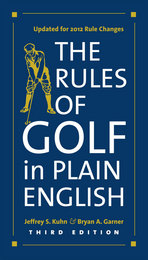
The hopes of renowned writer and golfer Henry Longhurst—and millions of golfers before and after him—have finally been realized. In The Rules of Golf in Plain English, Bryan A. Garner, American English language and usage expert, and Jeffrey S. Kuhn, volunteer USGA rules official, have translated the knotty Rules with the encouragement and permission of the United States Golf Association. The result is a modern, readable version that offers, for the first time, clear guidance to both amateurs and professionals.
Based on a 338-word set of thirteen rules written in 1744, the official Rules have grown, over two and a half centuries, to 40,000 words. Numerous contributors and a complex revision process have rendered these Rules so opaque and stylistically inconsistent that a companion volume—the 600-page Decisions on the Rules of Golf—has been published to help golfers navigate them.
Both lawyers and avid golfers, Kuhn and Garner recognized the difficulties that the language of the Rules of Golf created, especially in a sport that expects players to call penalties on themselves. By reworking the Rules line by line, word by word, they have produced an accessible resource that no golfer—from the duffer to the pro—should be without.
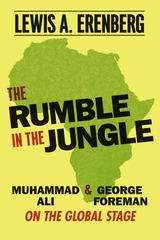
TheRumble in the Jungle orbits around Ali and Foreman, placing them at the convergence of the American Civil Rights movement and the Great Society, the rise of Islamic and African liberation efforts, and the ongoing quest to cast off the shackles of colonialism. With his far-reaching take on sports, music, marketing, and mass communications, Erenberg shows how one boxing match became nothing less than a turning point in 1970s culture.
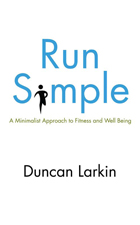
In this age of instant information and new technologies, marathoner and fitness instructor Duncan Larkin recommends that runners get rid of their iPods, pace calculators, and heart monitors while exercising. Rather than helping a runner to improve, the author contends that these devices can be a detriment to both performance and the benefits of a training program. Written in direct, clear language, Run Simple: A Minimalist Approach to Fitness and Well-Being is a practical and inspirational pocket guide for runners of all abilities. The author’s goal is to share with his fellow runners the principles he has discovered that prevent burn out and promote the maximum physical and mental benefits of running. Beginning with a discussion about the role of electronic devices and other equipment that have become commonplace among the millions of persons who run every day, the author explains how to return to a simpler way of exercising and training, including running plans that demonstrate the benefits of watch-free running. He also recommends replacing a gym membership with alternative exercises that can be done at home as well as taking better control of individual nutrition. In addition, the author shows ways to economize expenses associated with running, how to dress properly for different weather conditions, and mental exercises for motivation. By following the author’s advice, runners will improve their running experience and maintain a healthy exercise regimen.
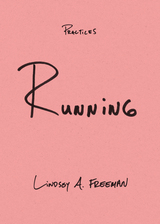
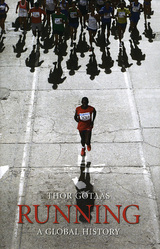
In the past decade, the number of Americans who consider themselves runners more than doubled—in 2008, more than 16 million Americans claimed to have run or jogged at least 100 days in the year. Though now running thrives as a convenient and accessible form of exercise, it is no surprise to learn that the modern craze is not truly new; humans have been running as long as they could walk. What may be surprising however are the myriad reasons why we have performed this exhausting yet exhilarating activity through the ages. In this humorous and unique world history, Thor Gotaas collects numerous unusual and curious stories of running from ancient times to modern marathons and Olympic competitions.
Amongst the numerous examples that illustrate Gotaas’s history are King Shulgi of Mesopotamia, who four millennia ago boasted of running from Nippur to Ur, a distance of not less than 100 miles. Gotaas’s account also includes ancient Egyptian pharaohs who ran to prove their vitality and maintain their power, Norwegian Vikings who exercised by running races against animals, as well as little-known naked runs, bar endurance tests, backward runs, monk runs, snowshoe runs, and the Incas’ ingenious infrastructure of professional runners.
The perfect gift for the sprinter, the marathoner, or the daily jogger, this intriguing world history will appeal to all who wish to know more about why the ancients shared our love—and hatred—of this demanding but rewarding pastime.
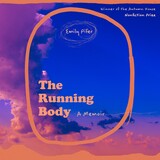
Emily Pifer’s debut memoir, The Running Body, wrestles and reckons with power and agency, language and story, body dysphoria and beauty standards, desire and addiction, loss and healing. Pifer employs multiple modes of storytelling—memoir, meditation, and cultural analysis—interweaving research, argument, and experience as she describes how, during her time as a collegiate distance runner, she began to run more while eating less. Many around her, including her coaches, praised her for these practices. But as she became faster, and as her body began to resemble the bodies that she had seen across start-lines and on the covers of running magazines, her bones began to fracture. Pifer tells her story alongside the stories of her teammates, competitors, and others as they all face trouble regarding their bodies.
Through the lens of long-distance running, Pifer examines the effects of idolization and obsession, revealing the porous boundaries between what counts as success and what is considered failure. While grounded in truth, The Running Body interrogates its relationship to magical thinking, the stories we tell ourselves, and the faultiness of memory. Fractures, figurative and literal, run through the narrative as Pifer explores the ways bodies become entangled in stories.
The Running Body was selected by Steve Almond as the winner of the 2021 Autumn House Nonfiction Prize.
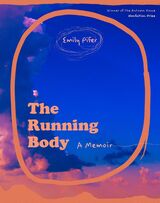
Emily Pifer’s debut memoir, The Running Body, wrestles and reckons with power and agency, language and story, body dysphoria and beauty standards, desire and addiction, loss and healing. Pifer employs multiple modes of storytelling—memoir, meditation, and cultural analysis—interweaving research, argument, and experience as she describes how, during her time as a collegiate distance runner, she began to run more while eating less. Many around her, including her coaches, praised her for these practices. But as she became faster, and as her body began to resemble the bodies that she had seen across start-lines and on the covers of running magazines, her bones began to fracture. Pifer tells her story alongside the stories of her teammates, competitors, and others as they all face trouble regarding their bodies.
Through the lens of long-distance running, Pifer examines the effects of idolization and obsession, revealing the porous boundaries between what counts as success and what is considered failure. While grounded in truth, The Running Body interrogates its relationship to magical thinking, the stories we tell ourselves, and the faultiness of memory. Fractures, figurative and literal, run through the narrative as Pifer explores the ways bodies become entangled in stories.
The Running Body was selected by Steve Almond as the winner of the 2021 Autumn House Nonfiction Prize.

As a sports scientist and Running Fitness columnist, John Brewer has reviewed hundreds of scientific studies, and he offers runners the benefit of their findings in Running Science. Each chapter explores a different aspect of the sport through a series of questions. Many of the questions address practical matters: Do you really need to stretch? Which running shoes best suit your form and foot strike? Does carbo-loading lore stand up to scientific scrutiny—could a big bowl of spaghetti be the difference between a PR and a DNF? Other questions enhance appreciation for the incredible feats of the sport’s great athletes. (What would it take to run a two-hour marathon? Perfect weather, a straight, flat course, competition, and a lot of luck!) The answer to each question is presented in a straightforward, accessible manner, with accompanying infographics.
Whether you’re a beginner or a seasoned runner with many miles and medals behind you, Running Science is a must-have for anyone interested in the fascinating science behind the sport.
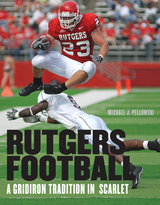
Rutgers Football: A Gridiron Tradition in Scarlet is a richly illustrated history of one of the most storied programs in all of college football. From the first intercollegiate contest against Princeton in 1869, which started college football as we know it, through the years that Paul Robeson suited up for the team, the famous undefeated season of 1976, and right up to the Schiano era, former Scarlet Knight Michael Pellowski takes you on a fascinating journey that chronicles the highlights of the first 137 years of Rutgers football. He makes special mention of the Scarlet Knights who have gone on to successful careers in the NFL-Brian Leonard, Mike McMahon, L.J. Smith, Gary Brackett, Ray Lucas, Deron Cherry, among others-and includes a complete listing of letter winners.
Now, with the Empire State Building being lit red in the team's honor, and fans believing that a national championship is within reach, Rutgers Football: A Gridiron Tradition in Scarlet provides the indispensable backstory for this team as it "chops" its way to future greatness.
READERS
Browse our collection.
PUBLISHERS
See BiblioVault's publisher services.
STUDENT SERVICES
Files for college accessibility offices.
UChicago Accessibility Resources
home | accessibility | search | about | contact us
BiblioVault ® 2001 - 2024
The University of Chicago Press









